
Meet No. 1
On August 20, 2007, the Toronto Railway Museum received its first operable locomotive. The Whitcomb 50-tonne diesel-electric switcher was the first newly acquired rail artifact to arrive at museum property in almost two decades. Since it was the first locomotive specifically acquired for operation at the Toronto Railway Museum, it received the number “1”.
Quarry Life
Right: CLC-Whitcomb 50-ton 380hp Hercules #2637. Milliken, ON. June 27, 1981. Gord Strathdee.
The diesel-electric switcher was built in Kingston, Ontario by the Canadian Locomotive Company (CLC) in 1950. It was one of only five locomotives of the Hercules 380hp type. These engines were built for industrial switching. Additionally, No. 1 was used in various aggregate industries northeast of Toronto; In other words, working with sand, gravel, and crushed stone. No. 1 was originally numbered “2637” by the CLC. The locomotive spent most of its working life switching in a Scarborough limestone quarry.

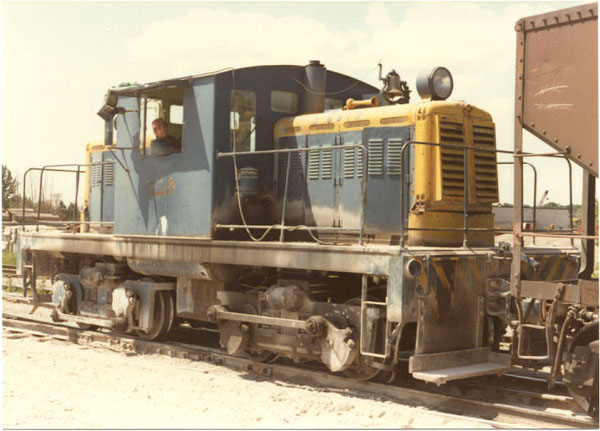
Subsequently, No. 1 retired from the quarry after 45 years. After that, in 1994, it was leased to the York-Durham Heritage Railway for work train service rebuilding the track between Stouffville and Uxbridge. Later, it was moved to Trenton, Ontario and remained there until it was acquired by the TRM.
Gord Strathdee, Photographer
Many of the wonderful photographs in this article were taken by Gordon Strathdee. Speaking to Gord via email, he wrote about his time shooting railway photos:
“I was privileged to ‘shoot’ mainline, short line and industrial railroad locomotives throughout most of Canada and the United States. All of my railroad photos predate the digital era and I have many thousands of colour photographs on hand. I especially sought out old, rare and obscure locomotives; these subjects were always a challenge to locate and photograph in their natural setting. Nelson Aggregates and Limestone Quarries, the owners of [the Toronto Railway Museum] switcher, certainly fell into this category; I visited all of their sites on a number of occasions and was always fascinated by their eclectic roster of unique locomotives.”
Gord Strathdee
Additionally, Gord provided some photos of No.1 from his collection, which he has generously given permission to share here. See the photos below!
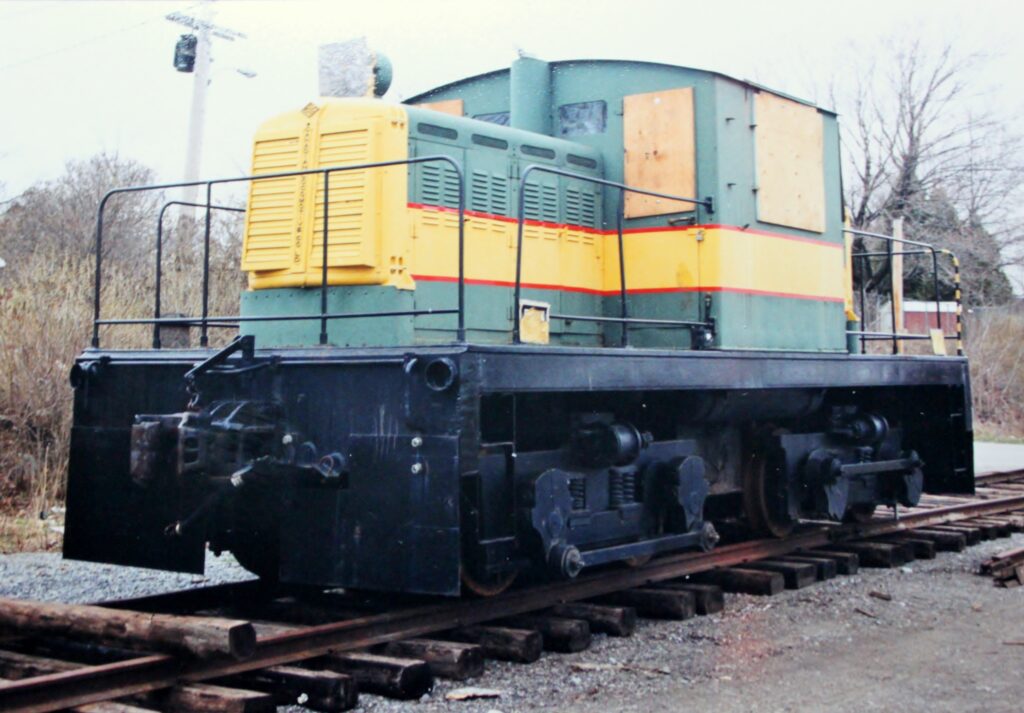
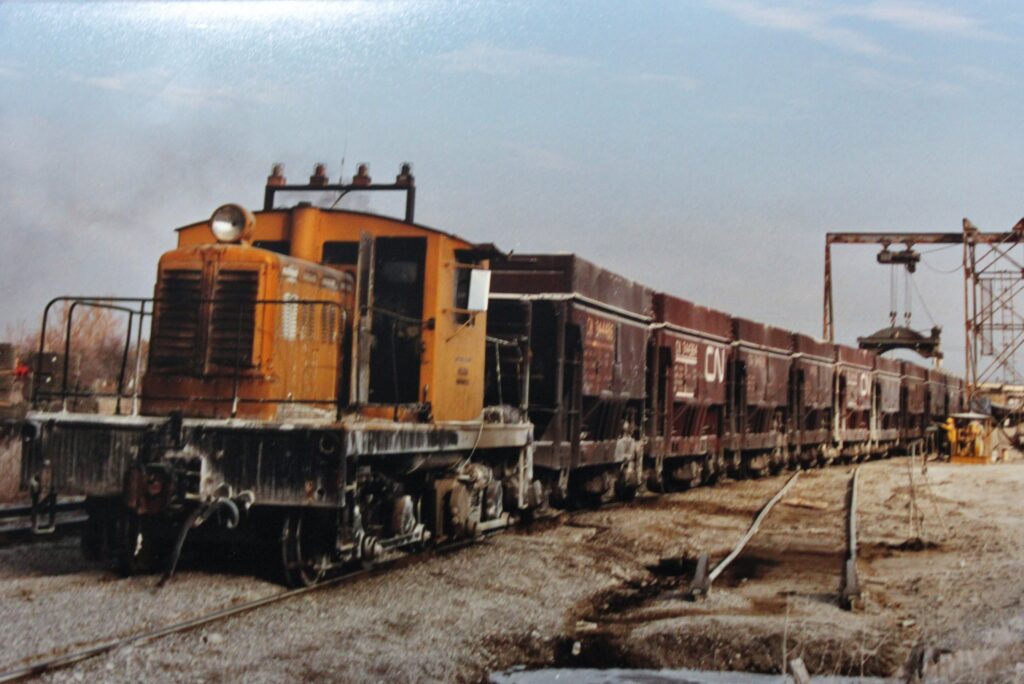
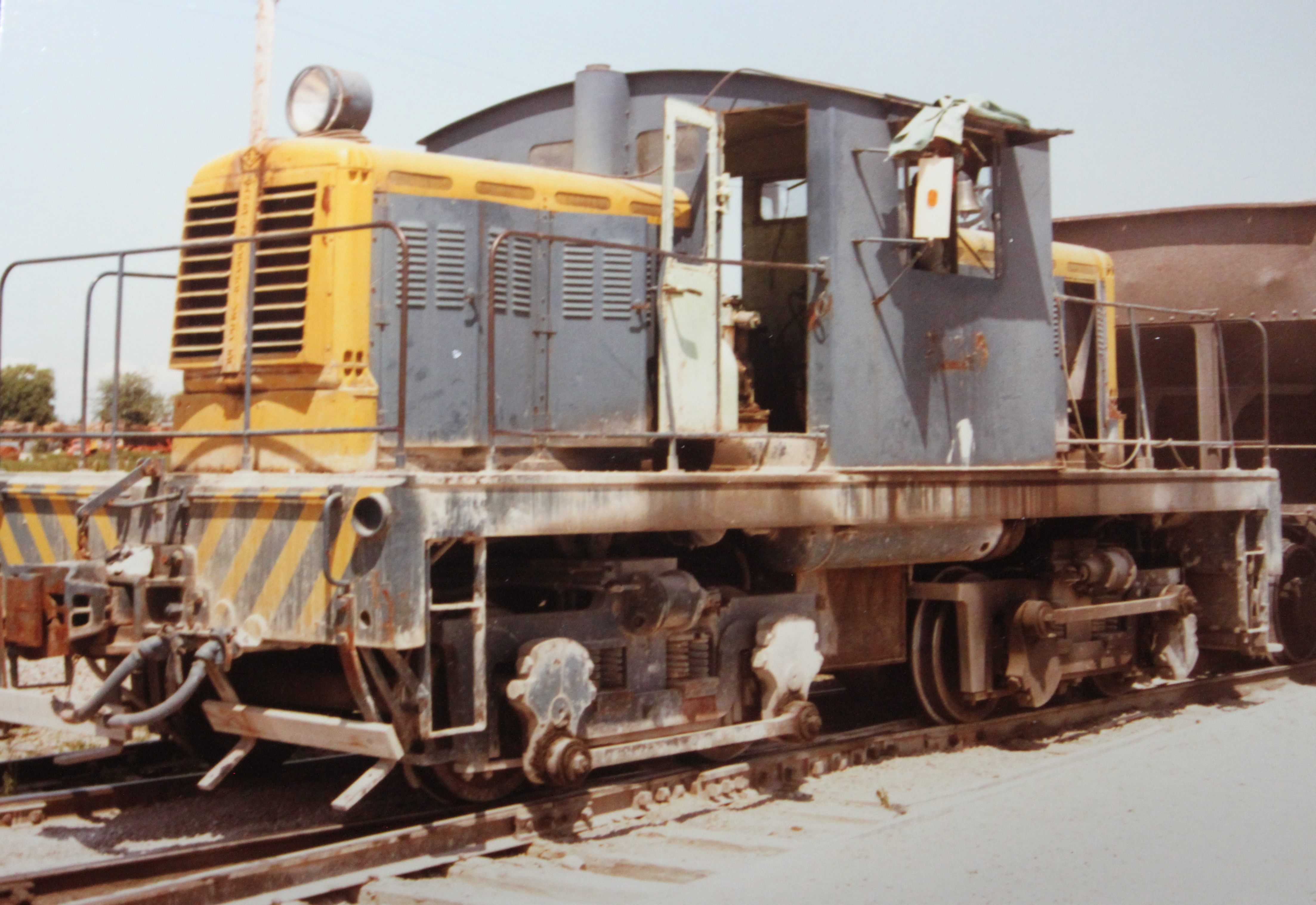
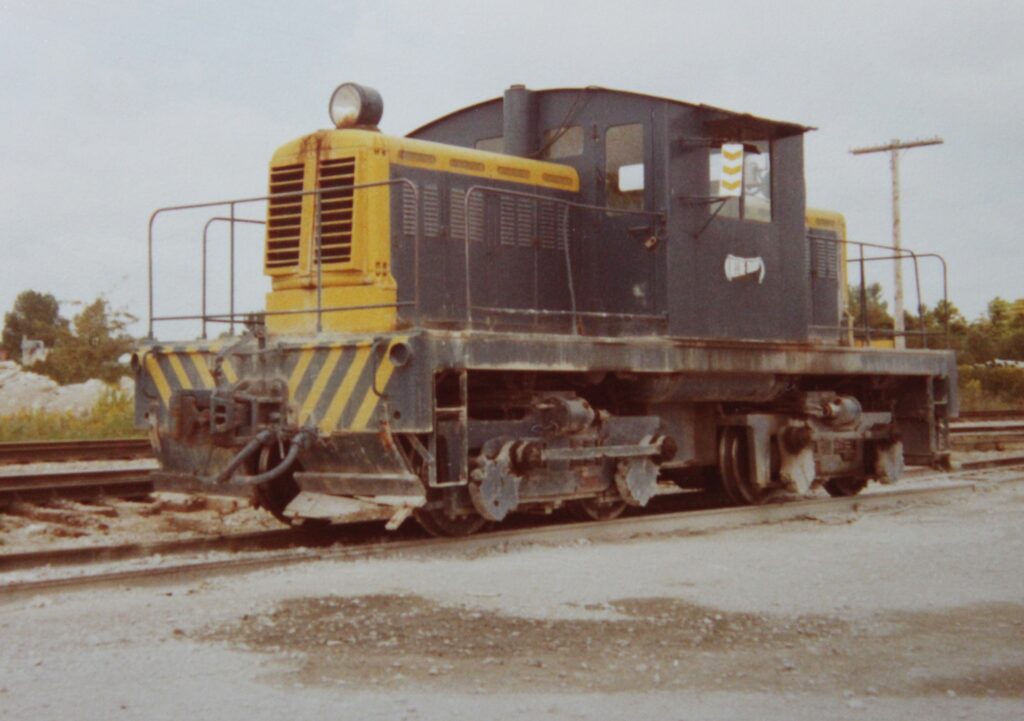
Arrival at TRM
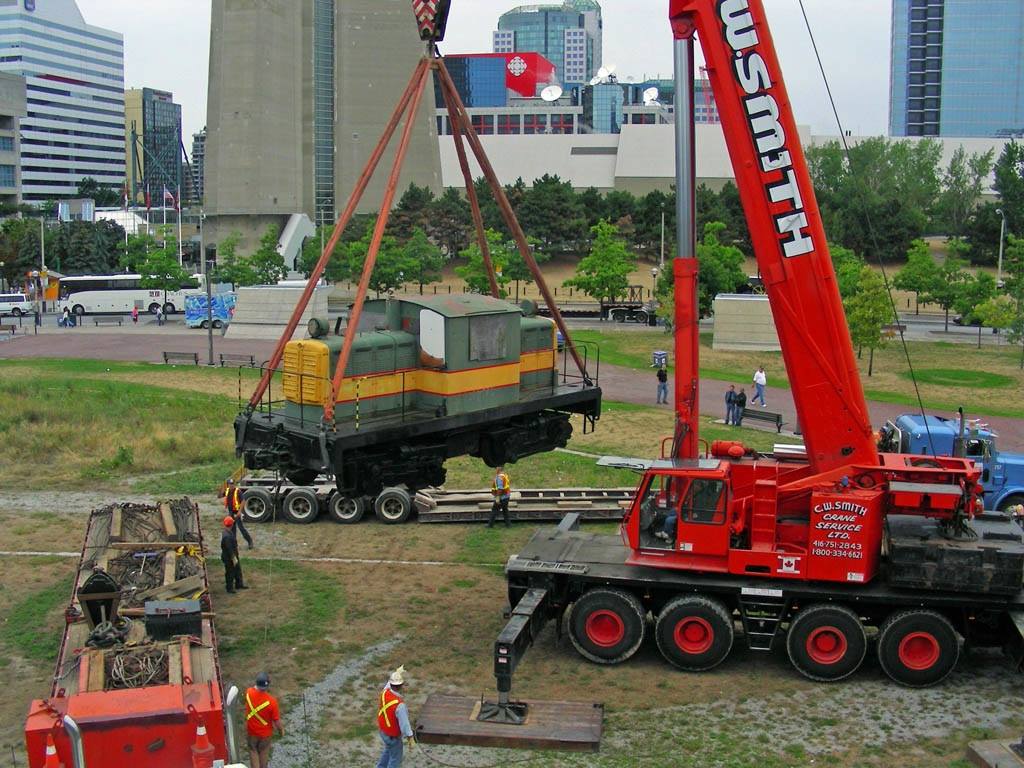
The Whitcomb was delivered by road and unloaded at the museum by crane. It is one of only three believed to exist in Ontario. Moreover, it is the last in original condition and therefore of some historic interest in its own right.
The unit was chosen for acquisition because it was powerful enough to move Canadian National Northern-type steam locomotive No. 6213. The museum required an engine powerful enough to pull the heavy load but compact enough to fit on the turntable with the locomotive and its tender. No. 1 was built to be strong and slow-moving.
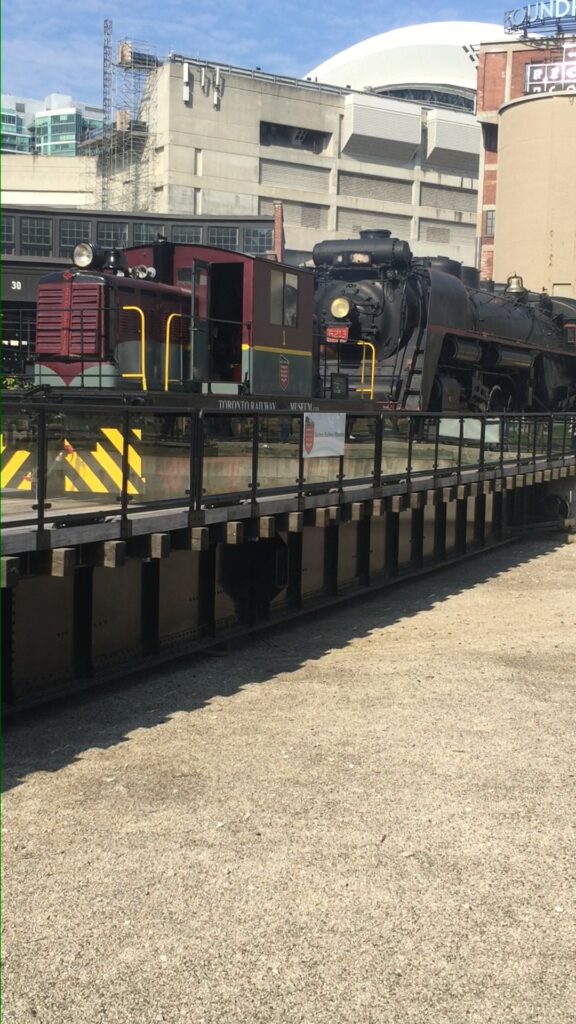
Switching locomotives are used to connect rail cars in the yard before transferring the train to a larger locomotive on a main line. In addition, No. 1 is double-ended — has two engines, two traction generators and two traction motors powering the two trucks. These pairs of parts are all arranged symmetrically about the centre cab.
Restoration Begins
After the locomotive arrived at the museum in 2007, restoration volunteers sprung into action. That is to say, TRHA volunteers began a program of cosmetic restoration. Firstly, broken and missing windows were replaced. After that, the cab cleaned out. Subsequently, No. 1’s exterior was repainted with attention to the tracks below the deck level. Later, volunteers followed that work with a mechanical and electrical systems overhaul. After that, the locomotive later received an engine replacement.
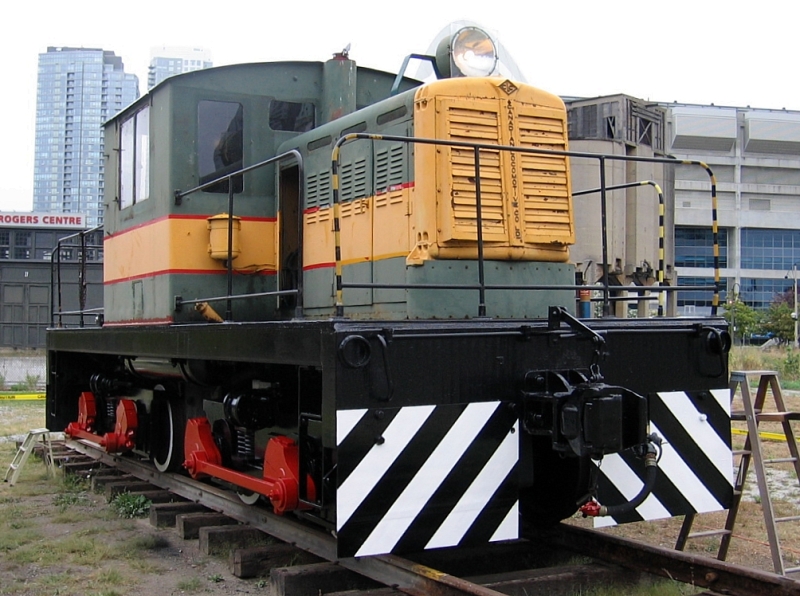
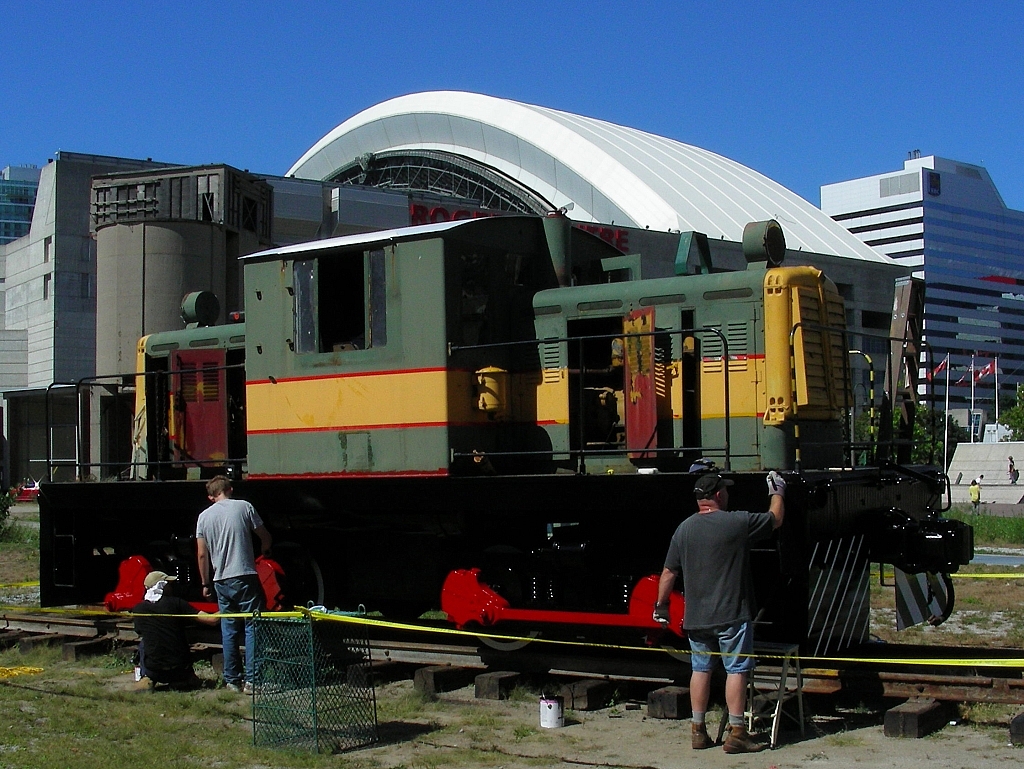
Painting No. 1
During the initial restoration, it was decided to repaint the unit in the Toronto, Hamilton & Buffalo Railway (TH&B) paint scheme. TH&B locomotives were frequently serviced at the John Street Roundhouse when it was operating.
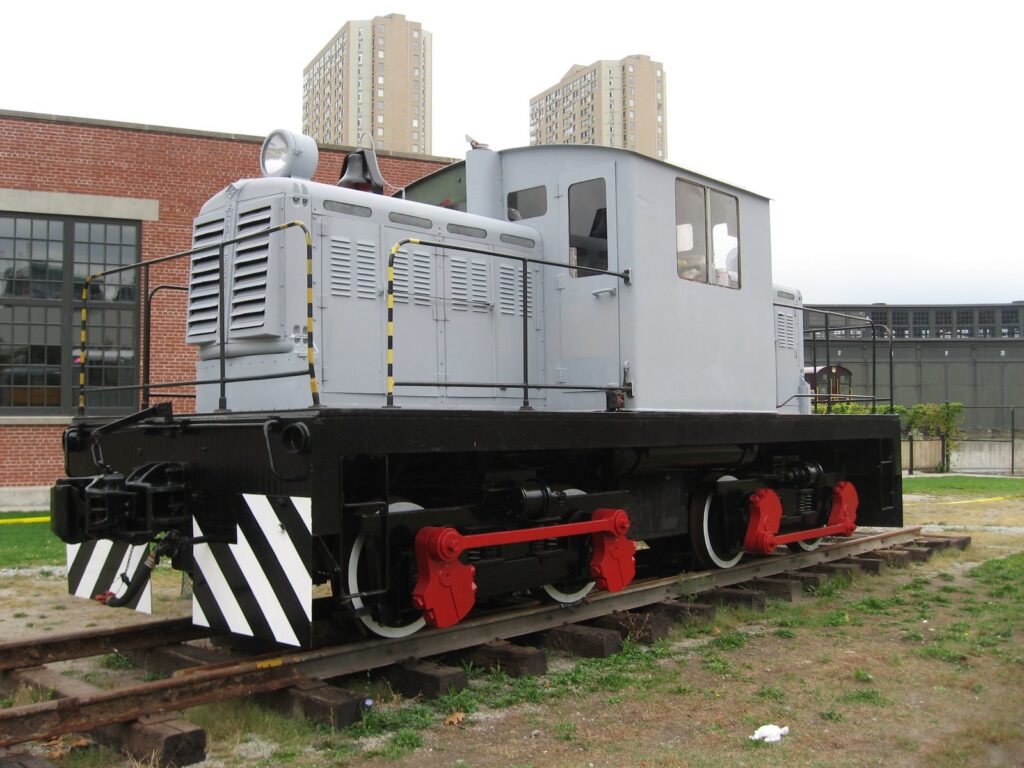
Right: No.1 hauls Canadian Pacific Dominion Boxcar No. 188625, possibly 2010.
No. 1 Today
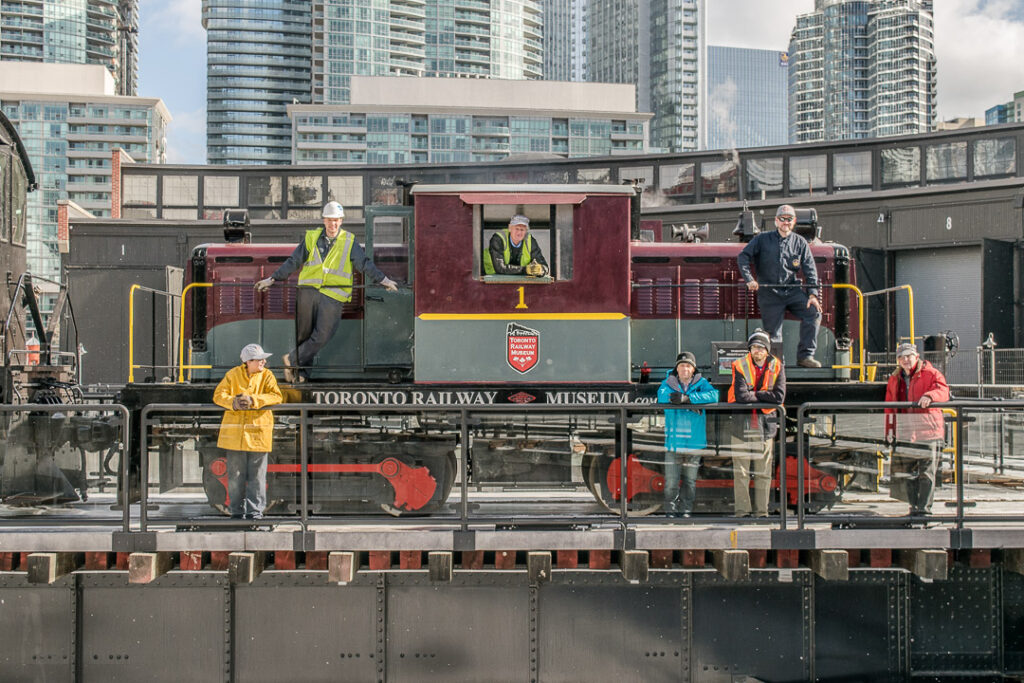
Today No. 1 is used by museum staff and volunteers to move rolling stock around and onto the turntable. To sum up, the locomotive plays a very important role at the Toronto Railway Museum. Watch No. 1 in action on our Youtube channel.
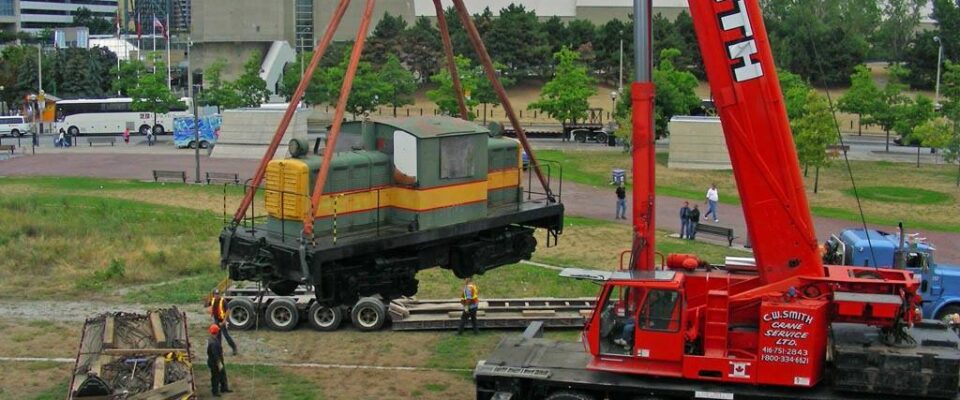
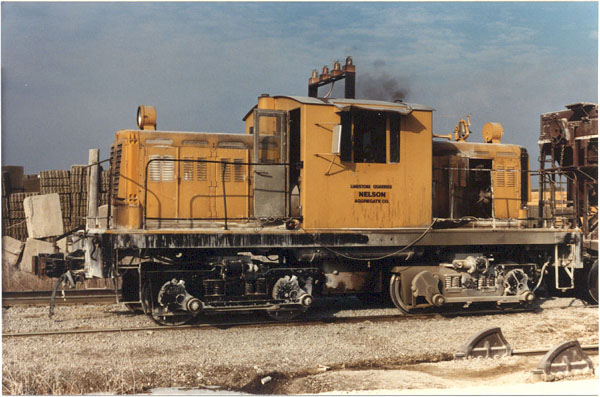


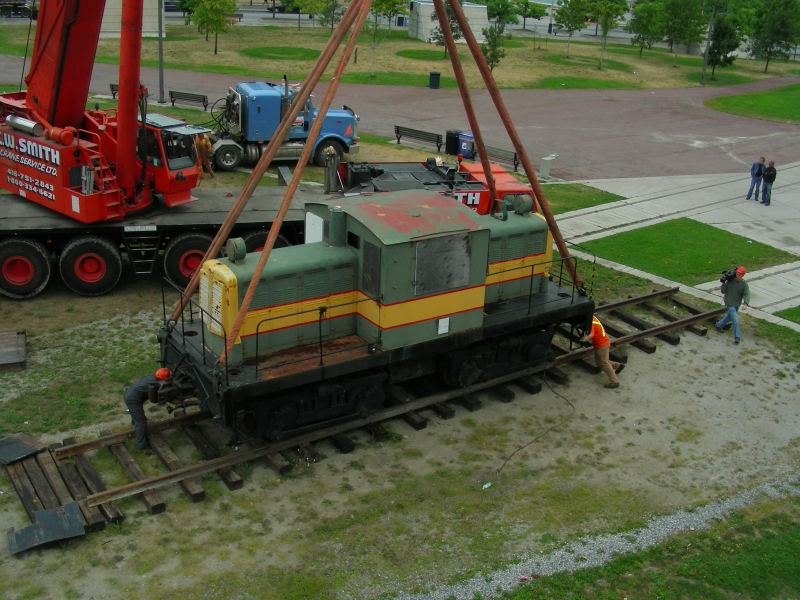


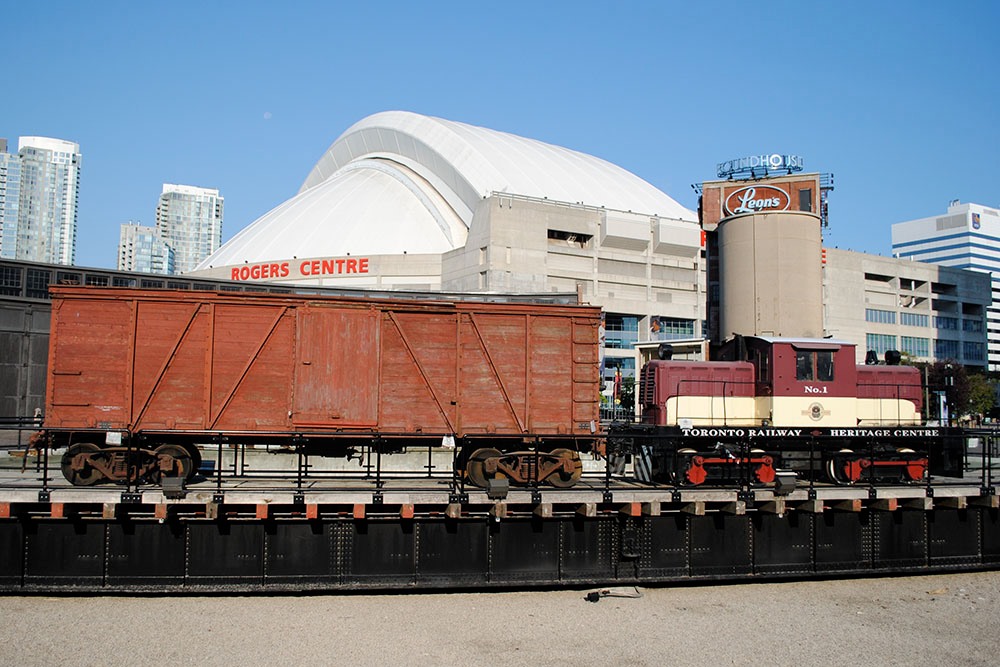
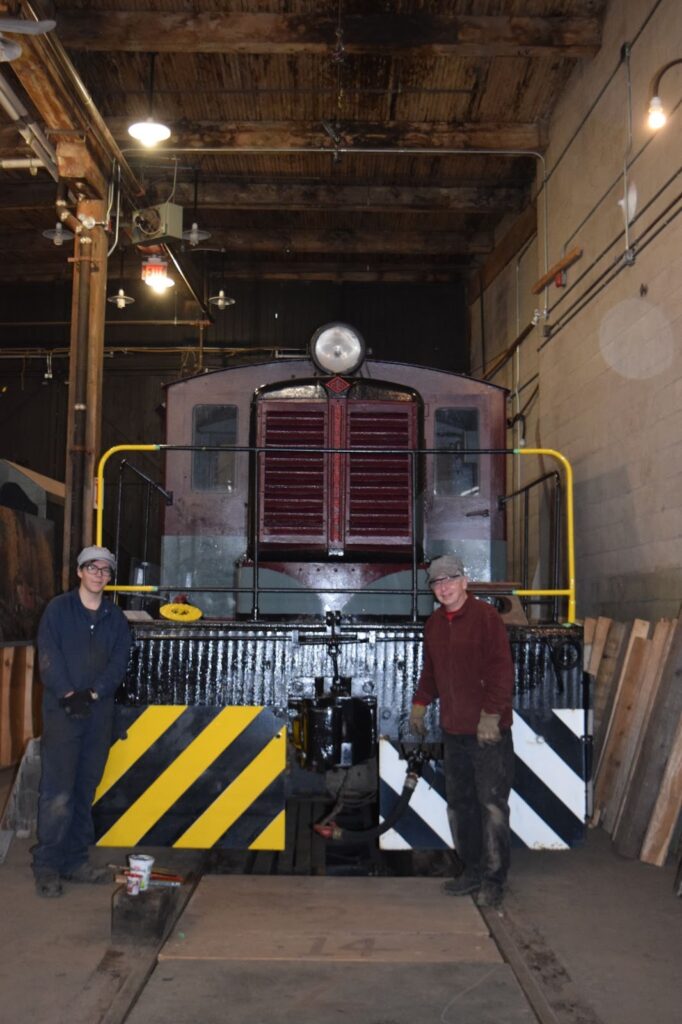

Great work on locomotive #1!
The paint scheme looks terrific. Good to see an important historic locomotive not only cosmetically restored, but, working as it was designed: earning it’s keep switching.
I remember that one could make out “Nelson Aggregates” under the yellow paint when we first started prepping for the re-paint.